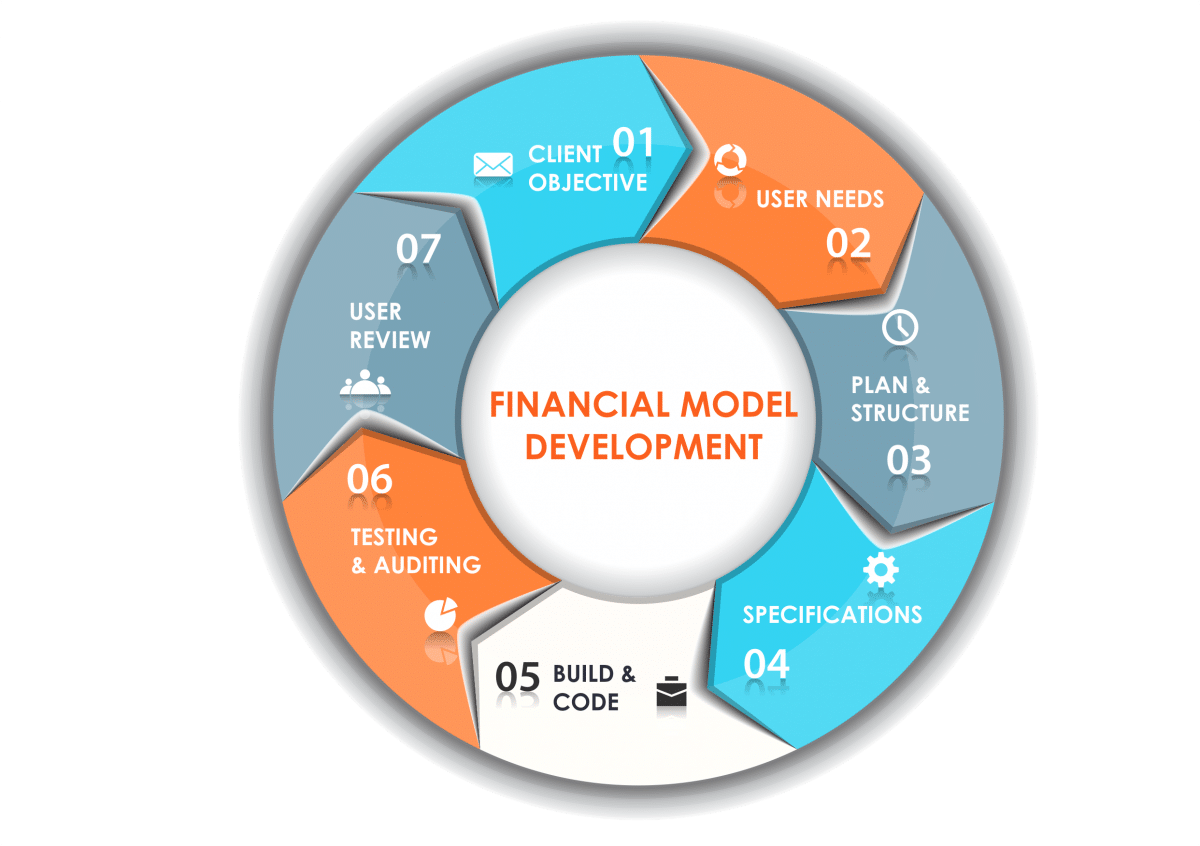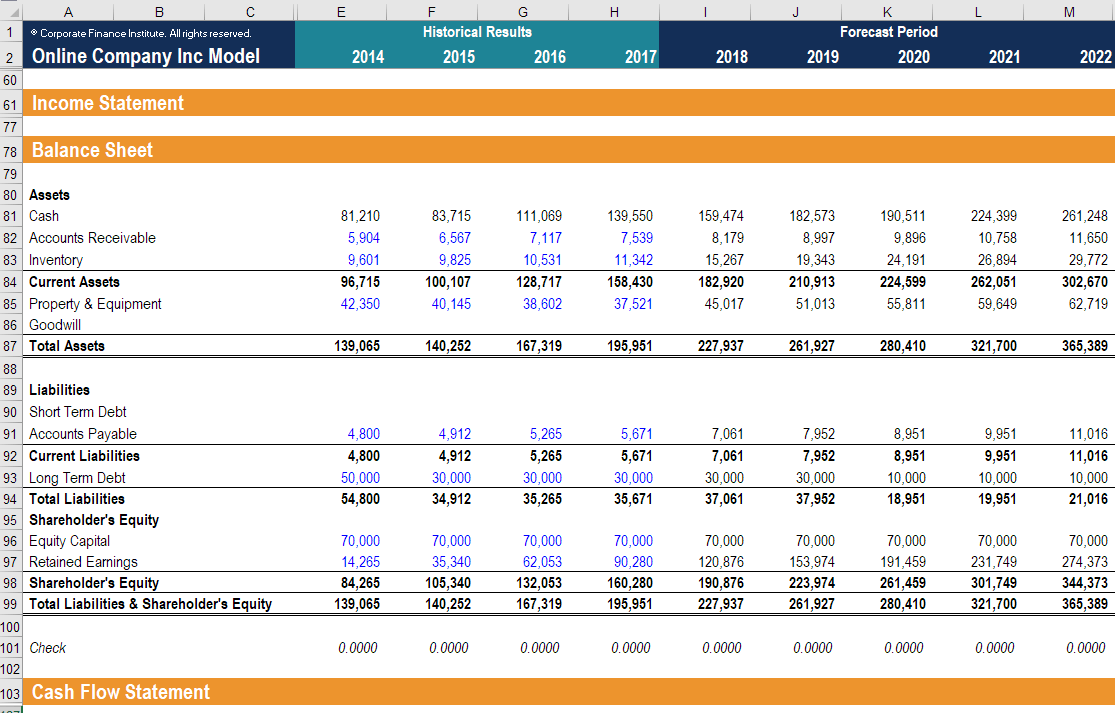Financial modeling is the process of producing a summary that contains a summary of a business’s expenses and profits and will be used to identify the effect of a future event or decision. It is most likely to be used by the company businesses for their calculations of their financial situation. In the following discussion, we are going to explain what that model is and why you should implement this kind of model for your business. We will also include some kind of the models that the modeling process will use to introduce you to get to know some of the modules that are going to take place while you’re using this system during your business activity.

Table of Content:
Table of Content
What is Financial Modeling?
Financial Modeling is the task of creating a model of a real-world financial situation. A mathematical model that is used to describe (a simplified version of) the performance of a financial asset or portfolio of a business, project, or other investment. For business executives, a financial model can be useful in a variety of ways. Financial analysts most commonly use it to examine and forecast how future events or executive choices will affect a company’s stock performance.
Typically, financial modeling refers to a quantitative activity in either the stock market or corporate finance. It involves putting a collection of hypotheses concerning market or agent behavior into numerical predictions. However, “financial modeling” is a wide phrase that can represent different things to different people; it usually refers to either accounting and corporate finance applications or quantitative finance applications. In other words, this model builds a financial forecast predictive model that helps a company make business decisions, and it is closely related to the use of financial reporting systems to manage and analyze data effectively.
Source: info-diklat.com
The Function of Financial Modeling
The advantages of implementing financial modeling in your financial situation company are to determine the situation from the past, and present and also to predict the future. Here are some of the functions of financial modeling that we will discuss even further for all kinds of aspects of your company’s being:
1. Becoming one of the planning methods
As mentioned above, financial modeling can be your weapon for your financial stuff. Doing financial modeling can be a good tool in planning the use of your business finances. In this case, you can immediately use the results to develop your business in the future. There are also possibilities if you know the picture of the future situation of what may happen, you are able to provide the solution to it to prevent the most unwanted situation possible. This model will also be the company’s guide in determining more operational steps at the present time. It will take the Forecasting Model for Financial Planning and Analysis (FP&A) as one of the Financial Modeling examples.
2. Control team performance effectively
The various data that this model contains, can indicate the effectiveness of the team as calculation material. One simple financial model example can be found easily in the gap between current cash flow and projected cash flow. The team will narrow down the possibility of the source of failure to less than optimal performance. With that, the important role of financial modeling will be able to assist you in getting information related to the failures which will later lead to the competence of resources.
3. Risk analysis media
The financial modeling can do the risk assessments simultaneously. Generally, this measurement will use sensitivity and elasticity analysis. The finance team technically will measure operational activities or the performance of resources related to each parameter. Later, the data will be able to show and obtain the results and also the risks associated with each line of the measurement object. The DCF model will manage this function. Any additional components of the business that might not be suitable for a DCF analysis. This analysis would value based on the market and add to that value of the business. And that are the financial modeling examples this measurement will be using.
4. Decision-making method
The model can use each component completely in making a decision. Based assumptions have a big role in providing a projected picture of operational, financial, or marketing conditions in the future. From that, you can execute after you determine the steps. Whether it’s continuing the previous process or changing part of the whole team. In this situation, we may use the Comparable Transaction Analysis Model, to identify the right transaction and then calculate the transaction’s multiple valuations as one of the financial modeling examples.
The Examples of Financial Modeling
Financial modeling is usually based on Excel spreadsheets, but it is not only for that. Not every spreadsheet is a financial model. Therefore, there are some of the examples that these Excel spreadsheets contain can be categorized as the top 10 most commonly used Financial Modeling examples in corporate finance by financial modeling professionals.
1. Three Statement Model
The three-statement model is a simple basic financial modeling arrangement. The three statements are the income statement, balance sheet, and cash flow. This will dynamically connect via Excel formulas with this model. The goal is to connect all of the assumptions that can trigger changes throughout the model. It’s important to understand how to connect the three financial accounts, which need a strong foundation in accounting, finance, and Excel.
2. Discounted Cash Flow (DCF) Model
The DCF model builds on the three-statement model to value a company based on its future cash flow’s Net Present Value (NPV). The DCF model takes the cash flows from the three financial statements, makes any necessary modifications, and then uses Excel’s XNPV function to discount them back to today at the company’s Weighted Average Cost of Capital (WACC). The stock research uses this kind of financial modeling examples and many other aspects of the capital markets.
3. Merger (M&A) Model
The M&A model is a more pro version for calculating the merger or acquisition’s pro forma accretion/dilution. It’s popular to use a single tab model for each company, with Company A Plus Company B equalling Merged Co. The difficulty usually varies greatly. It’s because they use one company and another as a comparison to calculate. The most frequent applications of this system are in investment banking and/or company development.
4. Initial Public Offering (IPO) Model
Investment bankers and corporate development experts use Excel to create IPO models to value their companies before they go public. These models combine an examination of comparable companies with an estimate of how much investors would be prepared to pay for the company in question. With the help of these types of financial model examples, it can facilitate the company that wants to propose for the stakeholders that want to invest in the company. the pricing of an IPO model An “IPO discount” is included in the pricing of an IPO model to ensure that the stock trades well in the secondary market.
5. Leveraged Buyout (LBO) Model
Another example that is most used in the financial situation is the LBO Model. These financial modeling examples provide a leveraged buyout deal, which is an advanced kind of financial modeling, generally needing to calculate complicated loan schedules. The various layers of funding create cycle references and demand cash flow waterfalls, making an LBO one of the most complicated and difficult of all sorts of financial models. Outside of private equity and investment banking, these types of approaches are uncommon. But for investment bank companies, it is very necessary for them to apply these kinds of financial modeling examples to lighten the burden.
Source: corporatefinanceinstitute.com
What you can get from Financial Modeling
Financial modeling cannot be separated from the company’s budget management process because it has the goal of obtaining a financial picture. However, this process is very complex, because it must include the calculation because it requires various variables in it. These various variables include the inclusion of previous work history, various financial reports, as well as assumptions expected from the company’s performance in the future.

For this reason, financial modeling assumptions must be strengthened with comprehensive data that relate to all aspects of the company’s operations. If studied further, the process of financial modeling can be a long job. For that, you should be able to entrust this task to a team that really understands and is competent in terms of finance and economics. In addition, we are happy to offer you the Accounting Software for your Financial Sector from HashMicro. With our Finance products, we help you to automate your daily business operations and optimize your client requirements in a real-time platform in the most effective way. You can also get a demo trial for free to prove our compatibility with your company. Get your Singapore’s Productivity Solutions Grant (PSG) 80% Off now for HashMicro ERP Software!























































